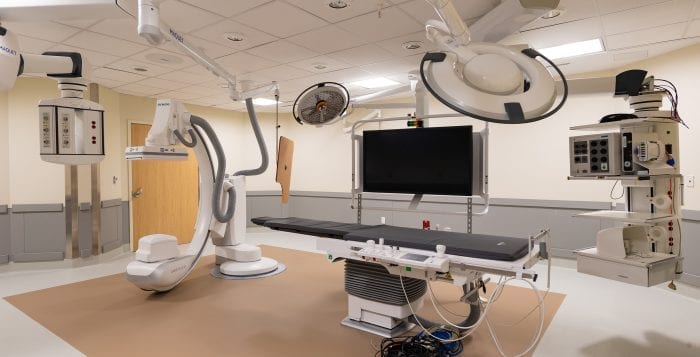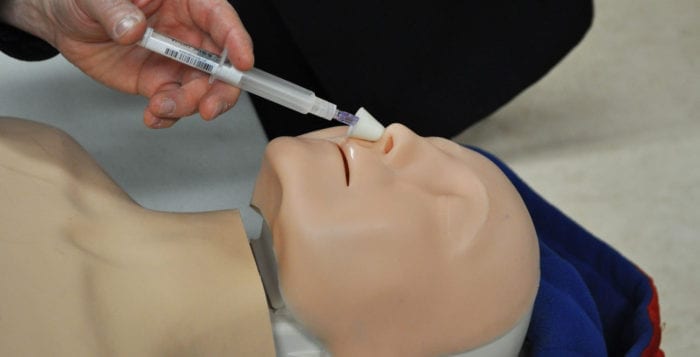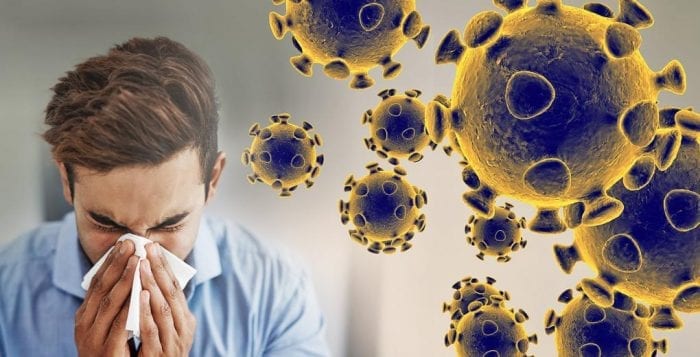As the number of people infected with the new coronavirus climbs in China and countries limit travel to the beleaguered country, the incidence of infection in the United States remains low, with 11 people carrying the respiratory virus as of earlier this week.
“While the risk to New Yorkers is still low, we urge everyone to remain vigilant.”
— Gov. Andrew. Cuomo
American officials stepped up their policies designed to keep the virus, which so far has about a 2 percent mortality rate, at bay in the last week. For the first time in over half a century, the government established a mandatory two-week quarantine for people entering from China’s Hubei Province, which is where the outbreak began. The United States also said it would prevent foreign nationals who are not immediate family members of American citizens from entering within two weeks of visiting China.
Nancy Messonnier, director of the National Center for Immunization and Respiratory Diseases at the Centers for Disease Control and Prevention, called the viral outbreak an “unprecedented situation” and suggested that the American government has taken “aggressive measures” amid the largely expanding outbreak.
The actions, Messonnier said on a conference call earlier this week, were designed to “slow this down before it gets into the United States. If we act now, we do have an opportunity to provide additional protection.”
The number of deaths from coronavirus, which has reached almost 500, now exceeds the number for the sudden acute respiratory syndrome, or SARS, in 2003. The number of infected patients worldwide has reached above 25,000, triggering concerns about a pandemic. More than 1,000 have recovered from the virus.
The CDC, which has been coordinating the American response to the virus, has been testing potential cases of the disease. Symptoms include fever, coughing and shortness of breath.
In New York, 17 samples have been sent to the CDC for testing, with 11 coming back negative and six pending. New York created a hotline, 888-364-3065, in which experts from the Department of Health can answer questions about the virus. The DOH also has a website as a resource for residents, at www.health.ny.gov/diseases/communicable/coronavirus.
“While the risk to New Yorkers is still low, we urge everyone to remain vigilant,” Gov. Andrew Cuomo (D) said in a statement.
The CDC sent an Emergency Use Authorization to the Food & Drug Administration to allow more local testing during medical emergencies. Such an effort could expedite the way emergency rooms respond to patients who they might otherwise need to isolate for longer periods of time while they await a definitive diagnosis.
By speeding up the evaluation period, the CDC would help hospitals like Stony Brook University Hospital maintain the necessary number of isolation beds, rather than prolonging the wait period in the middle of flu season to determine the cause of the illness.
As for the university, according to its website, approximately 40 students have contacted the school indicating they are restricted from returning to the U.S. With university approval, the students will not be penalized academically for being out or for taking a leave of absence.
“The most important thing is to keep your hands clean.”
— Bettina Fries
Testing for the new coronavirus, which is still tentatively called 2019-nCoV, would miss a positive case if the virus mutated. In an RNA virus like this one, mutations can and do occur, although most of these changes result in a less virulent form.
The CDC, whose website www.cdc.gov, provides considerable information about this new virus, is “watching for that,” said Bettina Fries, the chief of the Division of Infectious Diseases in the Department of Medicine at Renaissance School of Medicine at Stony Brook University. At this point, there “doesn’t seem to be much mutation yet.”
In the SARS outbreak, a mutation made the virus less virulent.
Fries added that the “feeling with SARS was that you weren’t infectious until were you symptomatic. The feeling with this one is that you are potentially infectious” before demonstrating any of the typical symptoms.
Fries assessed the threat from contracting the virus in the United States as “low,” while adding that the danger from the flu, which has resulted in over 10,000 deaths during the 2019-20 flu season, is much higher.
In the hospital, Fries said the health care staff puts masks on people who are coughing to reduce the potential spread of whatever is affecting their respiratory systems.
While Fries doesn’t believe it’s necessary to wear a mask to class, she said it’s not “unreasonable” in densely populated areas like airports and airplanes to wear one.
Masks don’t offer complete protection from the flu or coronavirus, in part because people touch the outside of the masks, where viruses condense, and then touch parts of their face. Even with the mask on, people touch their eyes.
“The most important thing is to keep your hands clean,” Fries suggested.
Fries believes the 14-day quarantine period for people coming from an area where coronavirus is prevalent is “probably on the generous side.” Scientists come up with this time period to establish guidelines for health care providers throughout the country.
Fries suggested that the only way these precautions are going to work is if they are aggressive and done early enough.
“Once the genie is out of the bottle” and an epidemic spreads to other countries, it becomes much more difficult to contain, Fries said.
The best-case scenario is that this virus becomes a contained problem in China. If it doesn’t spread outside the country, it could follow the same pattern as SARS, which abated within about eight months.
While there is no treatment for this new coronavirus, companies and governments are working on a possible vaccine. This, Fries estimated, could take about a year to create.
Looking out across the calendar, Fries wondered what would happen with the Olympics this year, which are scheduled for July 24 through Aug. 9 in Tokyo. Athletes who have been training for years certainly hope the virus is contained by then. A similar concern preceded the 2016 Olympics, when Zika virus threatened to derail the games in Brazil.









 When I bring up dental procedures with pet owners, the concern is pets require anesthesia for dental work. That invariably brings the question, “Is there anything we can do at home to prevent this?” The answer is a resounding “YES!!!”
When I bring up dental procedures with pet owners, the concern is pets require anesthesia for dental work. That invariably brings the question, “Is there anything we can do at home to prevent this?” The answer is a resounding “YES!!!”


 By now, most of us have been hit over the head with the fact that too much salt in our diets is unhealthy. Still, we respond with “I don’t use salt,” “I use very little,” or “I don’t have high blood pressure, so I don’t have to worry.” Unfortunately, these are myths. All of us should be concerned about salt or, more specifically, our sodium intake.
By now, most of us have been hit over the head with the fact that too much salt in our diets is unhealthy. Still, we respond with “I don’t use salt,” “I use very little,” or “I don’t have high blood pressure, so I don’t have to worry.” Unfortunately, these are myths. All of us should be concerned about salt or, more specifically, our sodium intake.




